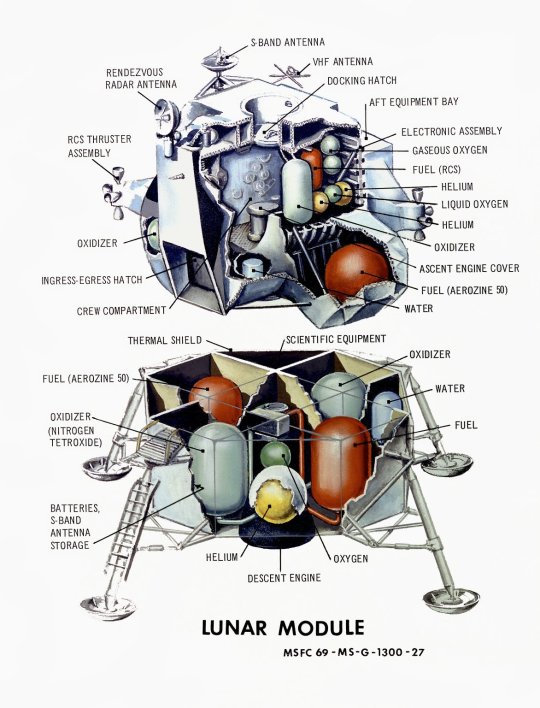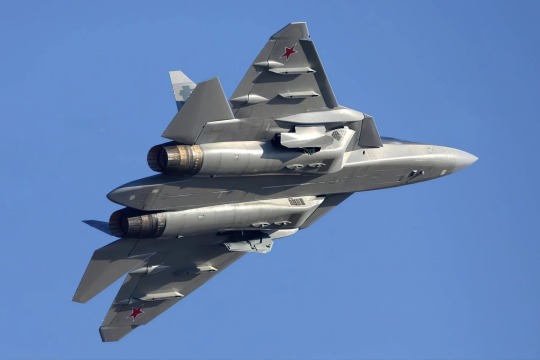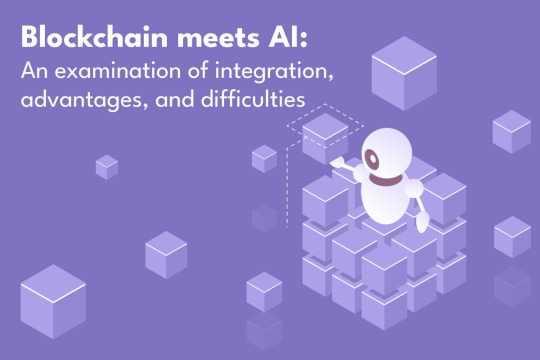#Distributed Control Systems Design Services
Text
OMAKHEATERS - PLATİN

Omak Heaters: Your Trusted Partner in Heating Solutions
When it comes to reliable and efficient heating solutions for various industrial applications, Omak Heaters stands out as a leading provider of top-quality products. Specializing in IBS tank heaters, barrel heaters, filter heaters, satellite dish heaters, and more, Omak Heaters offers innovative and dependable heating solutions to meet the diverse needs of its customers.
IBC Tank Heaters:
Omak Heaters offers a wide range of IBC tank heaters designed to provide consistent and uniform heating for industrial storage tanks. Whether you need to maintain the temperature of liquids or chemicals stored in tanks, our IBC tank heaters ensure optimal heating performance, enhancing operational efficiency and productivity.
Barrel Heaters:
For heating applications involving barrels and drums, Omak Heaters offers high-performance barrel heaters engineered to deliver efficient and uniform heat distribution. Our barrel heaters are designed to withstand harsh industrial environments and provide reliable heating solutions for various applications, including oil and chemical processing.
Filter Heaters:
Omak Heaters also specializes in filter heaters designed to prevent freezing and maintain optimal operating temperatures for filtration systems. Our filter heaters are built to deliver consistent and reliable heating performance, ensuring uninterrupted operation and prolonging the lifespan of filtration equipment.
Omak Heaters Quality Assurance:
At Omak Heaters, quality and reliability are our top priorities. All our heaters are manufactured using premium-quality materials and advanced manufacturing techniques to ensure superior performance and durability. Our team of experienced engineers and technicians conducts rigorous quality control tests at every stage of production to guarantee the highest standards of quality and reliability.
Customer-Centric Approach:
Omak Heaters is committed to providing exceptional customer service and support. We work closely with our customers to understand their unique heating requirements and offer customized solutions tailored to their specific needs. From product selection to installation and ongoing technical support, our dedicated team is here to assist you every step of the way.
Contact Omak Heaters Today:
Whether you're in need of IBS tank heaters, barrel heaters, filter heaters, or satellite dish heaters, Omak Heaters has the expertise and products to meet your heating needs. Contact us today to learn more about our comprehensive range of heating solutions and discover how we can help optimize your industrial heating processes.
625 notes
·
View notes
Text
So I don't know how people on this app feel about the shit-house that is TikTok but in the US right now the ban they're trying to implement on it is a complete red herring and it needs to be stopped.
They are quite literally trying to implement Patriot Act 2.0 with the RESTRICT Act and using TikTok and China to scare the American public into buying into it wholesale when this shit will change the face of the internet. Here are some excerpts from what the bill would cover on the Infrastructure side:
SEC. 5. Considerations.
(a) Priority information and communications technology areas.—In carrying out sections 3 and 4, the Secretary shall prioritize evaluation of—
(1) information and communications technology products or services used by a party to a covered transaction in a sector designated as critical infrastructure in Policy Directive 21 (February 12, 2013; relating to critical infrastructure security and resilience);
(2) software, hardware, or any other product or service integral to telecommunications products and services, including—
(A) wireless local area networks;
(B) mobile networks;
(C) satellite payloads;
(D) satellite operations and control;
(E) cable access points;
(F) wireline access points;
(G) core networking systems;
(H) long-, short-, and back-haul networks; or
(I) edge computer platforms;
(3) any software, hardware, or any other product or service integral to data hosting or computing service that uses, processes, or retains, or is expected to use, process, or retain, sensitive personal data with respect to greater than 1,000,000 persons in the United States at any point during the year period preceding the date on which the covered transaction is referred to the Secretary for review or the Secretary initiates review of the covered transaction, including—
(A) internet hosting services;
(B) cloud-based or distributed computing and data storage;
(C) machine learning, predictive analytics, and data science products and services, including those involving the provision of services to assist a party utilize, manage, or maintain open-source software;
(D) managed services; and
(E) content delivery services;
(4) internet- or network-enabled sensors, webcams, end-point surveillance or monitoring devices, modems and home networking devices if greater than 1,000,000 units have been sold to persons in the United States at any point during the year period preceding the date on which the covered transaction is referred to the Secretary for review or the Secretary initiates review of the covered transaction;
(5) unmanned vehicles, including drones and other aerials systems, autonomous or semi-autonomous vehicles, or any other product or service integral to the provision, maintenance, or management of such products or services;
(6) software designed or used primarily for connecting with and communicating via the internet that is in use by greater than 1,000,000 persons in the United States at any point during the year period preceding the date on which the covered transaction is referred to the Secretary for review or the Secretary initiates review of the covered transaction, including—
(A) desktop applications;
(B) mobile applications;
(C) gaming applications;
(D) payment applications; or
(E) web-based applications; or
(7) information and communications technology products and services integral to—
(A) artificial intelligence and machine learning;
(B) quantum key distribution;
(C) quantum communications;
(D) quantum computing;
(E) post-quantum cryptography;
(F) autonomous systems;
(G) advanced robotics;
(H) biotechnology;
(I) synthetic biology;
(J) computational biology; and
(K) e-commerce technology and services, including any electronic techniques for accomplishing business transactions, online retail, internet-enabled logistics, internet-enabled payment technology, and online marketplaces.
(b) Considerations relating to undue and unacceptable risks.—In determining whether a covered transaction poses an undue or unacceptable risk under section 3(a) or 4(a), the Secretary—
(1) shall, as the Secretary determines appropriate and in consultation with appropriate agency heads, consider, where available—
(A) any removal or exclusion order issued by the Secretary of Homeland Security, the Secretary of Defense, or the Director of National Intelligence pursuant to recommendations of the Federal Acquisition Security Council pursuant to section 1323 of title 41, United States Code;
(B) any order or license revocation issued by the Federal Communications Commission with respect to a transacting party, or any consent decree imposed by the Federal Trade Commission with respect to a transacting party;
(C) any relevant provision of the Defense Federal Acquisition Regulation and the Federal Acquisition Regulation, and the respective supplements to those regulations;
(D) any actual or potential threats to the execution of a national critical function identified by the Director of the Cybersecurity and Infrastructure Security Agency;
(E) the nature, degree, and likelihood of consequence to the public and private sectors of the United States that would occur if vulnerabilities of the information and communications technologies services supply chain were to be exploited; and
(F) any other source of information that the Secretary determines appropriate; and
(2) may consider, where available, any relevant threat assessment or report prepared by the Director of National Intelligence completed or conducted at the request of the Secretary.

Look at that, does that look like it just covers the one app? NO! This would cover EVERYTHING that so much as LOOKS at the internet from the point this bill goes live.
It gets worse though, you wanna see what the penalties are?

(b) Civil penalties.—The Secretary may impose the following civil penalties on a person for each violation by that person of this Act or any regulation, order, direction, mitigation measure, prohibition, or other authorization issued under this Act:
(1) A fine of not more than $250,000 or an amount that is twice the value of the transaction that is the basis of the violation with respect to which the penalty is imposed, whichever is greater.
(2) Revocation of any mitigation measure or authorization issued under this Act to the person.
(c) Criminal penalties.—
(1) IN GENERAL.—A person who willfully commits, willfully attempts to commit, or willfully conspires to commit, or aids or abets in the commission of an unlawful act described in subsection (a) shall, upon conviction, be fined not more than $1,000,000, or if a natural person, may be imprisoned for not more than 20 years, or both.
(2) CIVIL FORFEITURE.—
(A) FORFEITURE.—
(i) IN GENERAL.—Any property, real or personal, tangible or intangible, used or intended to be used, in any manner, to commit or facilitate a violation or attempted violation described in paragraph (1) shall be subject to forfeiture to the United States.
(ii) PROCEEDS.—Any property, real or personal, tangible or intangible, constituting or traceable to the gross proceeds taken, obtained, or retained, in connection with or as a result of a violation or attempted violation described in paragraph (1) shall be subject to forfeiture to the United States.
(B) PROCEDURE.—Seizures and forfeitures under this subsection shall be governed by the provisions of chapter 46 of title 18, United States Code, relating to civil forfeitures, except that such duties as are imposed on the Secretary of Treasury under the customs laws described in section 981(d) of title 18, United States Code, shall be performed by such officers, agents, and other persons as may be designated for that purpose by the Secretary of Homeland Security or the Attorney General.
(3) CRIMINAL FORFEITURE.—
(A) FORFEITURE.—Any person who is convicted under paragraph (1) shall, in addition to any other penalty, forfeit to the United States—
(i) any property, real or personal, tangible or intangible, used or intended to be used, in any manner, to commit or facilitate the violation or attempted violation of paragraph (1); and
(ii) any property, real or personal, tangible or intangible, constituting or traceable to the gross proceeds taken, obtained, or retained, in connection with or as a result of the violation.
(B) PROCEDURE.—The criminal forfeiture of property under this paragraph, including any seizure and disposition of the property, and any related judicial proceeding, shall be governed by the provisions of section 413 of the Controlled Substances Act (21 U.S.C. 853), except subsections (a) and (d) of that section.
You read that right, you could be fined up to A MILLION FUCKING DOLLARS for knowingly violating the restrict act, so all those people telling you to "just use a VPN" to keep using TikTok? Guess what? That falls under the criminal guidelines of this bill and they're giving you some horrible fucking advice.
Also, VPN's as a whole, if this bill passes, will take a goddamn nose dive in this country because they are another thing that will be covered in this bill.
They chose the perfect name for it, RESTRICT, because that's what it's going to do to our freedoms in this so called "land of the free".
Please, if you are a United States citizen of voting age reach out to your legislature and tell them you do not want this to pass and you will vote against them in the next primary if it does. This is a make or break moment for you if you're younger. Do not allow your generation to suffer a second Patriot Act like those of us that unfortunately allowed for the first one to happen.
And if you support this, I can only assume you're delusional or a paid shill, either way I hope you rot in whatever hell you believe in.
#politics#restrict bill#tiktok#tiktok ban#s.686#us politics#tiktok senate hearing#land of the free i guess#patriot act#patriot act 2.0
896 notes
·
View notes
Text
Apollo Program: Lunar Module (LM) production and names

The Grumman Aerospace Corporation was awarded the contract on November 7, 1962. Originally designated Lunar Excursion Module (LEM), NASA ordered 25 lunar modules (10 test articles and 15 production models) for testing and landing on the moon. This was to go with the 15 Saturn Vs and Apollo CSMs. They were assembled in Grumman's factory in Bethpage, New York.


"There were initially four major subcontractors: Bell Aerosystems (ascent engine), Hamilton Standard (environmental control systems), Marquardt (reaction control system) and Rocketdyne (descent engine).
The Primary Guidance, Navigation and Control System (PGNCS) was developed by the MIT Instrumentation Laboratory; the Apollo Guidance Computer was manufactured by Raytheon (a similar guidance system was used in the command module). A backup navigation tool, the Abort Guidance System (AGS), was developed by TRW."
-Information from Wikipedia: link
After the Gemini 3 spacecraft was dubbed Molly Brown by Gus Grissom, NASA forbade naming spacecraft. For Apollo 9, this changed due to mission controllers in Houston needing a way to differentiate between the two spacecraft.
Between 1969 and 1972, Grumman produced a series of insignias for their Lunar Modules which were distributed in limited quantities to their employees in the form of decals and prints.

Apollo 5 (LM-1): none

Apollo 3 (and later 2) (LM-2): Never used, intended for a mission similar to Apollo 5. The success of LM-1 led to the cancellation.


Apollo 9 (LM-3): Spider


Apollo 10 (LM-4): Snoopy. The LM ascent stage in heliocentric orbit and is the only known one to have survived intact


Apollo 11 (LM-5): Eagle (originally named haystack)


Apollo 12 (LM-6): Intrepid


Apollo 13 (LM-7): Aquarius
Humorously, Grumman sent North American (the manufacturer of the Apollo Command and Service Module) a tow bill sometime after the crew returned. North American retorted back saying they've never sent them a tow bill for the previous missions.


Apollo 14 (LM-8): Antares.


Apollo 15 (originally) (LM-9): never used, on display the Kennedy Space Center.
Intended for Apollo 15 and was the last H-type mission. When Apollo 18 was cancelled, it was decided to make Apollo 15 the first J-type mission.


Apollo 15 (LM-10): Falcon, originally intended for Apollo 16. First of the extended stay series.


Apollo 16 (LM-11): Orion, originally intended for Apollo 17


Apollo 17 (LM-12): Challenger, originally intended for Apollo 18.
Note: this name was reused for the second operational Space Shuttle Orbiter. After the Challenger Disaster, NASA officially retired the name.


Apollo 18 (LM-13): never used, originally intended for 19. It was partially completed when Apollo 18 and 19 were cancelled. Later restored by Grumman workers and is on display at the Cradle of Aviation History and Education Center.
Apollo 19 (LM-14): never used, originally intended for Apollo 20. It was partially completed when Apollo 18 and 19 were cancelled. What was completed, was later scrapped.

Apollo 20 (LM-15): never used, partially completed, scrapped. When Apollo 20 was cancelled, it was intended for modification into the Apollo Telescope Mount. Later the Telescope Mount was integrated into Skylab and this dedicated mission was cancelled.
source, source, source, source, source
NASA ID: MSFC-69-MS-G-1300-27, S67-50927, AS09-21-3183, AS10-34-5087, AS11-40-5946, AS12-46-6726, AS13-59-8566, AS14-66-9306, AS15-88-11866, AS16-113-18339, AS17-140-21370
#Lunar Module#Apollo Program#Apollo 5#LM-1#LM-2#Apollo 9#LM-3#Apollo 10#LM-4#Apollo 11#LM-5#Apollo 12#LM-6#Apollo 13#LM-7#Apollo 14#LM-8#LM-9#Apollo 15#LM-10#Apollo 16#LM-11#Apollo 17#LM-12#Apollo 18#LM-13#Apollo 19#LM-14#Apollo 20#LM-15
235 notes
·
View notes
Text

Deliveries of the Su-57 to the Russian Air Force with second-stage engine "will occur in the near future"
Fernando Valduga
Russia's Rostec State Corporation is prepared to deliver Sukhoi Su-57 combat aircraft with the advanced Izdeliye-30 (Product 30) or second stage engine.
According to a Rostec statement of May 12, the Su-57 is currently in testing with the second-stage engine, with plans to deliver aircraft equipped with these new engines in the near future.
“The Su-57 is being tested with a second-stage engine. Deliveries of aircraft with new engines are planned for the near future,” the company said.
Although not confirmed, it is expected that all future Su-57 will be equipped with the Izdeliye-30 (AL-51F-1) engine, marking a crucial step to the full realization of the Stealth capabilities of the Su-57 in series production.
youtube
Since the end of 2022, the Russian Aerospace Forces have received several batches of Su-57 aircraft, some with the new engine, promising greater thrust and supercruise capabilities.
The Izdeliye-30 engine has a post-combustion thrust of 18,000 kgf and a maximum thrust of 11,000 kgf, resulting in a 1.2-fold increase in the thrust-to-weight ratio. This increases the ascent rates to 330-350 m/s and agility during maneuvers. It also raises the service ceiling and supersonic cruising speed to 2,150-2,200 km/h, with a maximum speed of 2,600-2,700 km/h.
The introduction of the Izdeliye-30 engine is expected to improve game thrust, fuel efficiency and reduce weight and maintenance requirements.
A striking feature of the Izdeliye-30 engine is its exhaust nozzle that increases thrust efficiency, stability, maneuverability and reduces engine noise. The addition of chevron-shaped exhaust nozzles significantly reduces the aircraft's infrared (IR) and radar signatures, improving its stealth characteristics.

The AL-51F-1 (Izdeliye 30) is an advanced turbofan engine with two-axis, low bypass post-combustion design. Notable improvements over its predecessor, the AL-41F1, include fiberglass plastic IGVs and convergent-divergent nozzles with serrated flaps to minimize radar visibility. The AL-51F-1 engine also shows a 19% increase in the thrust/weight ratio, a 6.4% increase in specific thrust and a 9% reduction in specific fuel consumption.
Tags: Military Aviationizdeliye 30RFSAF - Russian Federation Aerospace Force/Russian Aerospace ForceSukhoi Su-57 Felon
Sharing
tweet
Fernando Valduga
Fernando Valduga
Aviation photographer and pilot since 1992, he has participated in several events and air operations, such as Cruzex, AirVenture, Dayton Airshow and FIDAE. He has works published in specialized aviation magazines in Brazil and abroad. He uses Canon equipment during his photographic work in the world of aviation.
Related news
MILITARY
United States selects Aurora to design a heavy-duty seaplane
13/05/2024 - 10:00
MILITARY
Malaysia wants to acquire more South Korean FA-50 jets
13/05/2024 - 09:00
MILITARY
Greece plans to acquire 10 more Dassault Rafale fighters
13/05/2024 - 08:40
BRAZILIAN AIR FORCE
FAB: Florianópolis Air Base is the new donation distribution center for RS
13/05/2024 - 07:49
BRAZILIAN NAVY
Navy details how was the arrival of the largest warship in Latin America in Rio Grande (RS)
12/05/2024 - 22:58
MILITARY
The drugs that pilots take to stay awake — and the dilemmas that this brings
In terms of power, the thrust of this turbofan engine reaches 107.9 kN (24,300 lbf) without afterburning and 166.8 kN (37,500 lbf) with activated after-combustion. Equipped with a full-authority motor digital control system (FADEC), the AL-51F-1 ensures reliability in various operating conditions.
14 notes
·
View notes
Text
How to Select the Right ERP Software for Your Indian Manufacturing Firm: Key Considerations
Introduction
In the dynamic landscape of the Indian manufacturing industry, the integration of an efficient Enterprise Resource Planning (ERP) system is paramount. Selecting the right ERP system for manufacturing industry can significantly impact a firm's operational efficiency, productivity, and overall competitiveness. This article delves into the crucial aspects of choosing the best ERP system tailored for the unique needs of Indian manufacturing firms.

Understanding the Unique Needs of the Indian Manufacturing Industry
1. Regulatory Compliance: Navigating the Complexities
One of the primary considerations for Indian manufacturers is ensuring compliance with local regulations. The selected ERP modules for manufacturing industry should seamlessly align with the Goods and Services Tax (GST) framework, a cornerstone of the Indian taxation system. It is imperative to choose a system that streamlines compliance with industry-specific regulations, safeguarding the manufacturing firm from legal complications.
2. Scalability: Growing with Your Business
As Indian manufacturing firms aspire for growth, scalability becomes a pivotal factor in ERP selection. Opt for a system that can effortlessly adapt to the evolving needs of your business. Scalability is particularly crucial for Indian manufacturers aiming for expansion in a market known for its dynamism and ever-changing demands.
3. Localization: Aligning with the Indian Operational Landscape
ERP software must be tailored to the nuances of the Indian market. Look for solutions offering localization features, including support for multiple languages, adherence to regional accounting standards, and culturally relevant interfaces. This ensures that the Best ERP for manufacturing industry seamlessly integrates into the operational fabric of your Indian manufacturing firm.
Key Features to Consider
1. Supply Chain Management: Navigating the Complex Web
Efficient supply chain management is integral for Indian manufacturers dealing with diverse suppliers and fluctuating market demands. The chosen ERP system should provide real-time visibility into the entire supply chain, encompassing procurement, production, and distribution. This ensures that your manufacturing firm can proactively respond to market changes and optimize resource allocation.
2. Production Planning and Control: Meeting the Complexities Head-On
The intricacies of manufacturing processes in India necessitate a comprehensive production planning and control module within the ERP system. Look for software that offers advanced features such as demand forecasting, capacity planning, and real-time monitoring of production processes. This empowers your manufacturing firm to enhance operational efficiency and meet customer demands with precision.
3. Quality Management: Upholding Excellence
Maintaining high-quality standards is non-negotiable for the success of any manufacturing firm. The ERP for manufacturing industry should include robust quality management modules that facilitate adherence to stringent quality control measures. This ensures that your products meet regulatory requirements and customer expectations, bolstering your reputation in the competitive Indian market.
Best ERP for the Indian Manufacturing Industry
1. Evaluating the Options
Selecting the best ERP for your Indian manufacturing firm involves a meticulous evaluation of available options. Consider industry-specific solutions renowned for their effectiveness in addressing the challenges prevalent in the Indian manufacturing landscape.
2. ERP Modules Specifically Tailored for Manufacturing
Explore ERP systems that offer modules explicitly designed for the manufacturing industry. These modules should cover essential aspects such as material requirements planning (MRP), shop floor control, and advanced planning and scheduling (APS). The seamless integration of these modules enhances operational visibility and control.
Customization and Integration: A Prerequisite for Success
1. Tailoring the ERP System to Your Needs
No two manufacturing firms are identical, and the chosen ERP system should accommodate this diversity. Look for software that allows customization to align with the unique processes and requirements of your Indian manufacturing firm. This ensures that the ERP system becomes an asset tailored to your specific needs rather than a one-size-fits-all solution.
2. Integration with Existing Systems
The ERP system should seamlessly integrate with existing software and systems within your manufacturing firm. This includes compatibility with Customer Relationship Management (CRM) software, Human Resource Management Systems (HRMS), and other relevant applications. A well-integrated ERP system for manufacturing industry streamlines data flow, minimizing redundancies and enhancing overall efficiency.
User-Friendly Interface and Training
Ensuring Adoption and Efficiency
An ERP system is only as effective as its adoption by the end-users. Prioritize user-friendly interfaces that facilitate easy navigation and understanding. Additionally, invest in comprehensive training programs to ensure that your team is proficient in utilizing the ERP system to its full potential. This approach maximizes the benefits derived from your ERP investment.
Cost Considerations: Balancing Investment and Returns
1. Calculating the Total Cost of Ownership (TCO)
While the initial cost of ERP implementation is a crucial consideration, it's equally essential to assess the Total Cost of Ownership (TCO) over the long term. Evaluate not only the upfront costs but also ongoing expenses related to maintenance, upgrades, and potential customization. This holistic approach ensures that the chosen ERP system aligns with your budgetary constraints without compromising on functionality.
2. Return on Investment (ROI): Ensuring Long-Term Value
Consider ERP implementation as a strategic investment rather than a mere expense. Calculate the anticipated Return on Investment (ROI) based on enhanced operational efficiency, reduced lead times, and improved customer satisfaction. A thorough ROI analysis ensures that the chosen ERP system delivers long-term value and contributes to the overall success of your Indian manufacturing firm.
Vendor Reputation and Support
1. Choosing a Reliable Partner
Selecting an ERP vendor with a proven track record in the manufacturing industry is crucial. Research and assess the reputation of potential vendors, considering factors such as the number of successful implementations, customer reviews, and the vendor's financial stability. A reliable vendor ensures ongoing support and updates, safeguarding your investment and providing peace of mind.
2. Support and Training Services
Evaluate the support and training services offered by the Best ERP for manufacturing industry. Responsive customer support and comprehensive training programs contribute to a smooth implementation process and ongoing success. Prioritize vendors that prioritize customer satisfaction and offer tailored support to address the unique needs of your Indian manufacturing firm.
Conclusion
In conclusion, choosing the right ERP software for manufacturing industry requires a strategic approach that considers the unique challenges and opportunities in the dynamic Indian market. By prioritizing regulatory compliance, scalability, localization, and key features such as supply chain management, production planning, and quality control, you can identify an ERP solution that aligns seamlessly with the needs of your manufacturing operations. Additionally, evaluating customization options, integration capabilities, user-friendliness, cost considerations, and the reputation of ERP software providers ensures a well-informed decision that propels your Indian manufacturing firm toward enhanced efficiency, productivity, and long-term success.
#ERP for manufacturing industry#ERP system for manufacturing industry#ERP software for manufacturing industry#Best ERP for manufacturing industry#ERP modules for manufacturing industry#India#Gujarat#Vadodara#STERP#shantitechnology
7 notes
·
View notes
Text
Blockchain meets AI: an examination of integration, advantages, and difficulties

Introduction
Blockchain technology and AI (artificial intelligence) are two of the most disruptive technologies of our age. Blockchain technology provides a secure, decentralized mechanism for the storage and transmission of information, while AI gives opportunities to analyze data in ways unimaginable before. These, when combined, can change industries completely and create new growth opportunities.
However, it is not easy to integrate blockchain and AI. This requires in-depth knowledge of both technologies as well as the ability to handle the technical and regulatory challenges that come with their fusion. That’s where a blockchain consulting company comes in.
A blockchain consulting company refers to a specialized firm that offers expert advice and assistance concerning blockchain development and implementation. They have deep understandings of the technical and regulatory environment of blockchain as well as the capabilities to navigate the complexities associated with making blockchains compatible with other technologies, such as AI.
By collaborating with this company, organizations can ensure that their integration between blockchain and AI will be successful and bring anticipated advantages. A blockchain consulting company can help an organization:
Understanding the technological landscape of areas like blockchain or AI from a regulatory perspective
Selecting appropriate blockchain platforms and AI tools for use cases
Developing business-aligned strategies for integrating blockchain with AI
Ensuring the security and scalability of its merger between artificial intelligence-enabled systems powered by blockchains
Understanding regulatory barriers that hinder efforts towards adopting this type of partnership
In essence, if any organization wants to enjoy the benefits offered by merging these two technologies, then they must work closely with the right experts from a blockchain consulting company who will guide them through all hitches that occur during implementation, including those arising from legal restrictions.
What is blockchain?
Blockchain is a digital ledger system characterized by decentralization, thus promoting transparency in record-keeping practices. Rather than having one central authority maintain it, this distributed database is operated by several computers connected together via internet channels. Its decentralization makes it highly secure, preventing fraud or tampering.
Essentially, a blockchain is a series of blocks, each having records of transactions. These blocks are connected by means of cryptography, which makes it difficult for anyone to tamper with their data.
Blockchain technology has multiple uses, ranging from cryptocurrency and payments to supply chain management to voting processes. Key features include:
Decentralization: Blockchain systems do not have a central authority in control but instead are run by multiple computers, each with its own copy of the blockchain.
Security: The security and integrity of transactions being carried out in blockchain rely on the use of cryptography. Each block in the blockchain is linked to the next one using a unique code that makes it virtually impossible to change any content without being detected.
Transparency: It has been designed as an open system where every transaction can be seen by everyone within the network. Such transparency minimizes opportunities for corruption and fraud.
Immutability: Once something is entered onto this digital platform, such as a financial transaction, it remains there forever. This creates permanent audit trails for all activities recorded on this system.
Blockchain Development Services
Blockchain technology is quite intricate, and therefore, it is important to engage a team of experienced blockchain developers for the success of your blockchain project. Blockchain Development Services offers expertise and resources that are necessary for creating, developing, and deploying customized blockchain solutions tailored to fit your individual requirements.
The following are the ways blockchain development services can help:
Identification of the right blockchain platform suitable for your use case
Designing and developing a tailor-made blockchain solution consistent with business objectives.
Ensuring security and scalability within your blockchain solution
Integrating your blockchain solution with other systems as well as technologies
Provision of continuous support and maintenance services for your blockchain solution
Involving experienced stakeholders in developing a successful blockchain project is something that should be emphasized if tangible benefits are to be derived from it. You could want to make a cryptocurrency, supply chain management system, or vote. Consider contacting Block Chain Development Services, which will help you attain what you are pursuing here.
What is AI?
Artificial intelligence (AI) refers to the creation of computer systems able to perform tasks that usually require human intelligence, such as visual perception, speech recognition, decision-making, and language translation. AI systems apply algorithms together with machine learning styles in analyzing data, discerning patterns, and making decisions with minimal human intervention.
The different types of AI include:
Narrow AI: this kind is only meant for doing some particular job, such as voice recognition or image analysis. Narrow AI systems have limited capabilities; they cannot do anything outside their specific domain.
General AI: This kind refers to any intellectual activity performed by an ordinary human being. General AI systems are still under development and are not widely accessible yet.
Superintelligent AI: The term “superintelligent” was hypothetical, referring to an intelligence system far more developed than average humans. Superintelligent AI does not exist yet, though scientists continue to discuss it extensively.
AI has extensive applications across various industries, including healthcare, finance, and transportation, among others. It has the following key features:
Automation: AI can automate repetitive and time-consuming tasks, freeing up human resources for more strategic and creative work.
Predictive Analytics: Using AI, it is possible to analyze big data and find patterns or trends that could be used to forecast future happenings.
Personalization: With AI, one can analyze individual preferences and behaviors so that personalized recommendations are made possible.
Natural Language Processing: In addition to this, AI performs analysis on languages spoken by people, thereby making communication between individuals and machines easier.
AI technology is a fast-developing field, with new breakthroughs being achieved on a regular basis. As AI continues to advance, its potential applications and impact on society will only continue to grow.
In the next section, we will discuss how blockchain and artificial intelligence (AI) can be integrated together to create new opportunities for innovation and growth. We will also examine such aspects as the advantages of the blockchain-AI integration process, the challenges posed by it, the role of blockchain development services in this context, and the roles played by blockchain consulting companies within these borders.
Integration of blockchain and AI
The fusion of blockchain with artificial intelligence (AI) represents an influential blend of technologies that could reshape multiple industries. By combining blockchain’s security and transparency with the analytical capabilities of AI, organizations can discover new possibilities for innovation as well as operational efficiency.
Advantages of Integrating Blockchain with AI
1.Enhanced Security: The decentralized and immutable attribute of blockchain can enhance AI systems security by giving a tamper-proof record of data and transactions.
2. Improved Data Quality: Blockchain-stored information can be analyzed by the artificial intelligence algorithms for insights that are valuable to improving decision-making processes.
3. Increased Efficiency: Tasks within blockchain networks may be automated by the use of artificial intelligence, thus simplifying processes and reducing operational costs.
4. Smart Contracts: Artificial intelligence is used in optimizing and automating smart contracts’ execution on blockchain platforms, which enhances accuracy and efficiency.
5. Predictive Analytics: By combining blockchain data with artificial intelligence algorithms, organizations can extract predictive insights into things like market trends, customer behavior, or even operational performance.
Challenges to Combining Blockchain and AI
1. Technical Complexity: It requires expertise in both of these areas to integrate blockchain with AI technologies due to the technical complexities involved.
2. Scalability: For instance, as data volume increases, ensuring that blockchain networks can handle the computational demands of AI algorithms poses a challenge.
3. Interoperability: Differences between protocols and data formats make communication between blockchain and AI systems difficult.
4.Regulatory Uncertainty: Compliance and data protection present major complications since there are no clear regulations governing the integration of blockchain with AI technology yet.
Live visibility and traceability of products and materials in the supply chain can be improved by combining blockchain technology with AI. Organizations can optimize their supply chain processes using AI algorithms that are used to study patterns and trends in blockchain data, thus reducing costs.
Enhanced Customer Experience:
AI is capable of personalizing customer experiences through the analysis of blockchains to understand customer behavior as well as preferences. They are able to provide customers with more individualized, secure, trusting, and engaging experiences, leveraging the transparency and safety net that blockchain offers.
Hire blockchain developers.
For businesses to get the maximum benefits out of the integration of blockchain with AI, it’s important for them to engage experienced professional programmers who know how to develop software based on both of these technologies. Companies employing blockchain developers can:
Create a product or platform that meets company-specific requirements.
Make sure their integration between blockchain and AI is secure and scalable.
Address issues related to legislative compliance.
Ensure that their systems run most efficiently; hence, maximize the utility arising out of the convergence between blockchain and AL.
Difficulties of Blockchain-AI Integration
Although the blending of AI with blockchain has a promising future in various industries, it has some challenges. However, there are some challenges that need to be resolved if the potential benefits of integrating AI with blockchain are going to be fully exploited:
Scalability: Scalability is one of the main issues in integrating blockchain with artificial intelligence (AI). In order for AI systems requiring real-time data processing to be integrated with the slow transaction processing speed characteristic of many block chains (Kambatla et al., 2014),.
Data privacy and security: The other challenge lies in data privacy as well as security for the combination between blockchain technology and artificial intelligence (AI). It’s hard for one person or group since its decentralized aspect implies each node having limited access controls towards ensuring confidentiality or integrity is maintained regarding information stored within the distributed ledger environment provided by Bockchain.
Interoperability: Also, interoperability is a major barrier to the integration of AI and blockchain. For instance, different blockchain networks are designed with varying protocols and standards that make it difficult for them to connect seamlessly with other AI systems.
Regulatory challenges: Additionally, the integration of blockchain technology with artificial intelligence has brought regulatory challenges. The use of AI algorithms in blockchain networks has raised concerns due to their potential biases and discrimination (Lepri et al., 2017).
Lack of standards: The lack of guidelines as well as best practices concerning the combination of blockchain and AL can hinder organizations from implementing solutions to scale.
High cost: Implementing blockchain-AL convergence could be expensive since it requires significant investment in infrastructure, building up, and maintaining the technology.
Lack of expertise: Companies may also find it challenging to implement suitable plans due to a lack of professionals who understand what it takes to combine these two technologies.
These companies can help organizations navigate the complexities of blockchain-AI integration and ensure that their solutions are scalable, secure, and compliant with regulatory requirements. It is important for organizations grappling with implementing or scaling blockchain-AI solutions to consider engaging skilled developers who specialize in this specific area.
Conclusion
In conclusion, the integration of blockchain and AI has the potential to bring about transformative changes in various industries. By bridging decentralization and security attributes that exist within block chains with the ability of AI systems for data analysis and interpretation, new opportunities will emerge, leading to an innovative growth process.
Nevertheless, blockchain-AI integration is a challenge that is not without its challenges. To fully realize the potential of blockchain-AI integration, there are some difficulties, such as scalability, data privacy and security, interoperability, regulatory challenges, lack of standards, high cost, and lack of expertise, that have to be addressed.
In addition to these obstacles, it is important to engage experienced BaaS providers or consulting firms that specialize in blockchain-AI integration. This will save enterprises from the complexity of blockchains’ AI structures and ensure they deliver scalable solutions with the highest level of safety for customers’ personal data.
These challenges can be overcome by hiring blockchain developers with expertise in this field. They help organizations come up with tailored solutions to satisfy their individual needs and requirements.
More companies are expected to explore blockchain-AI integration. As technology advances, we will see other areas where it will be used, hence opening new doors for innovation and growth.
2 notes
·
View notes
Text
Commercial AC Options with Jas AC Plaza Suggestion
In the world of commercial air conditioning, businesses are presented with a variety of options to choose from. Cassette, ductable, and tower systems are among the most preferred choices, each designed to meet the specific needs of different commercial settings. Let's delve into the unique attributes of each system:

Cassette Systems: Cassette air conditioning units are mounted on the ceiling, ensuring uniform airflow while maintaining an elegant appearance. They are particularly suitable for areas with limited ceiling space or where a subtle design is desired. Equipped with advanced features like adjustable fan speeds and timers, cassette systems provide efficient cooling and heating solutions.
Ductable Systems: Ductable air conditioning, also known as ducted systems, is an excellent option for expansive commercial spaces. By utilizing concealed ductwork, these systems evenly distribute cooled or heated air throughout the building. Their zoning flexibility allows for precise temperature control in different zones, ensuring optimum comfort for occupants. Additionally, discreet grilles contribute to a clutter-free interior ambiance, enhancing overall aesthetics.
Tower Systems: Tower air conditioning systems, positioned as floor-standing units, offer versatility in placement, seamlessly fitting into corners or against walls. With robust cooling and heating capabilities and advanced filtration mechanisms, they excel in demanding environments like server rooms. Tower systems are favored for their effectiveness in cooling spaces with limited ceiling or wall space, providing a practical solution where other options may fall short.
Each of these air conditioning systems offers unique advantages tailored to the specific requirements of commercial spaces:
Cassette systems prioritize aesthetics and space efficiency.
Ductable systems offer centralized control and zoning capabilities, making them ideal for larger commercial buildings.
Tower systems provide installation flexibility and powerful performance, catering to spaces with unique needs or space constraints.

For outstanding AC services in Chennai, Jas AC Plaza comes highly recommended. Renowned for their expertise in servicing Daikin and Bluestar ACs, they provide comprehensive solutions for all AC brands. With a reputation for quality products and dependable service, Jas AC Plaza is the ultimate destination for all AC needs in Chennai.
2 notes
·
View notes
Text
Rambly Lore Post? Rambly Lore Post.
Ok class today we'll be talking about technological progression and shit woooooooo
most of this will be written from the perspective of military aerospace because that's both a good frame of reference for how my brain works (i don't know tank generations very well, for example) and it also is a relatively time-independent frame of reference because there might be some historical events getting switched around, big technological hurdles reached earlier and stuff.
Alright, so let's start with the end of WWII with the last piston and first generation of jet fighters. These were actually fairly close in performance- jets of course were faster, but not by that much just yet. Even if the trend was obvious, engine lifetimes and fuel thirstiness kept jets down for a little while. The second generation of jets fighters would start changing this as we got supersonic entries, and by the third we start seeing relatively long-endurance aircraft with advanced avionics, and the finalization of a shift to missiles. Fourth-gen fighters mark yet further improvements to avionics, sensors, and performance- in some cases also favoring a lower wing loading over third-gen predecessors that often had some pretty dubious low-speed handling. Finally, we reach the currently latest generation fielded, 5. This is a bit of a nebulous generation as a lot of the aerodynamic stuff is essentially just 4 again- if anything, some pure aerodynamics have slipped back, and they've become reliant on sheer thrust to maintain their otherwise superlative kinematic performance. The defining points, however, seem to be Low Observability and advanced computerization that renders their sensors not just more powerful, but also easier to manage- crucial, as the two-seat cockpits older aircraft with similar systems required to distribute the workload are a compromising factor for stealth, and would eat internal space that the internal weapons bays put at a great premium.
Now, the Regular Military has since progressed down this route. Sixth-generation fighter aircraft seem to already have a definition in real life, that being that they're likely to be optimized for drone control. While capable aircraft in their own right, they're projected to be extremely large and expensive compared to their fifth-generation ilk (who already bear a cost spike (if an exaggerated one in some cases)), bomber-like, two-seaters, and likely a true downgrade in pure kinematics. These have been in service for a while in the setting, supplementing 4th and 5th generation aircraft- with 7th generation fighters being prototyped with a number of pre-production "YF-" designated airframes around. G7 aims to streamline the G6 design. It's knocked back down to one pilot in a small, extremely stealthy aircraft, bearing very little of its own equipment and highly kinematic by virtue of just how light it is. Onboard radars are basic, and room for weaponry is lacking- but with computer assistance, these aircraft can command a formation of drones to perform all those jobs. Moving the main radar off of the manned aircraft component of the fleet, for example, is immensely beneficial now that LPI frequency-shifting techniques are starting to get cracked a little bit by this point in time, and beaming an enemy is now somewhat more likely to reveal your position. Of course, it also has the sort of psychological effect that the least threatening part of the fleet being the manned plane means that the manned plane hundreds of miles away is less likely to be shot than the expendable drones actively bombing your position, which itself is likely to vastly increase survivability even in the event of total mission failures.
This is on top of things in between. There've been a lot of intermediate Generation "4.5" or "4+(+?)" aircraft implementing advanced avionics and semi-stealth into G4 planes. On the more fictional side, Freelancers and less-funded militaries have sought upgrades for older aircraft. Sometimes these are relatively reasonable life-extensions and glass cockpits being just barely crammed into G3s. Sometimes they're attempts to turn G2 fighters into light missile trucks with newer engines. Sometimes someone uploads scans of old piston and G1 airframe structures to the internet and Freelancers can have them printed in space-age alloys on the cheap, and manage to cram FLIR, a modern engine, and a rotary cannon into the poor thing. The more scuffed variations of this have been dubbed "KitCarriage" because the main thing they're good for is carrying a kit of modern avionics, countermeasures, and weapon modules- and many are, of course, unmanned. The opposite end of the spectrum is some hair-splitting in G5 aircraft. There's now a recognized "5.5" group of later aircraft that managed to run stealth cheaper than initial 5th gens, with much lower unit price and cost per flight hour. By contrast, many of those early 5th gens were adapted later on into lower-stealth modifications called "5-" (like, Five Minus), which still would bear decent stealth capabilities but save a lot of money.
Of course, the more organized Mercenary cabals had undergone their divergences from this line. Two, to be in fact. The bigger Merc groups were, during the Cold War, split a little bit. MercNet would form from the main group, but many feared that having that much close-knit power could essentially lead to them essentially just becoming a second regular military. These ones split off, but would eventually reconsolidate into a second group. Today known as GhostShip because, uh, well, something happened but they're... Ffff...ine? Now? They're sort of all nebulous personas loosely managing expendable clone armies. Not a terrible gig but boy they should NOT have pissed off that wizard or whatever the fuck that was.
But they naturally had an ideological split happen relatively early, and thus their point of divergence lies between 3rd and 4th gen fighters. GhostShip would have trouble making workload reduction effective, so multi-crewed vehicles were somewhat mandatory if you wanted the radar and stuff to be good. This in turn reflects sort of how their entire thing works out.
GhostShip has options for single-crew vehicles that sorta suck y'know? These "Bantams" are stuck in that lightweight end of 3rd gen, in the aircraft examples- armored vehicles are often light casemate TDs in their analogous class. Emphasis on that they kinda see themselves as expendable, anyone else would make these drones. Then we get to two-seater "Aquilas" that have a gunner/driver or pilot/WSO division and can afford such lavish amenities as radar, or a turret, and it goes up and up from there. Their technology base differs from either MercNet or RegMil. Their material engineering is superlative, but they're held back by low computerization and a (well, at least more blatant) desire to cut costs. A certain crowd of nerds may be glad to know that they're back to the point of viewing guns as the main armament of combat aircraft, in an age where everyone else sees them as weapons of opportunity at best. Ordnance tends to lack measures to increase capacity seen so often in other groups that have minimized munition sizes or just crammed more onto a given pylon via MERs- less so for GhostShip, who tend to plan out their objectives tightly and equip small shot counts of big brute-force weapons specialized for each step. Stealth is a thing, but they sort of converged on it rather than just getting with the program, and trying to work it into the other quirks of their designs can result in some distinctive looks to say the least.
As for MercNet, if that implies they just stuck with RegMil technologically, uh, no. As G6 was underway, MercNet split off and started investing into original models. Directed-Energy weapons were on the horizon and MercNet felt a need to address them directly, managing to create advanced, lightweight ablative armor- this differs from RegMil using drones as a catch-all solution to that, but ADB imagined attrition rates versus a laser-armed peer would be too high even if they were all UAVs (though MUM-T became a shared tactic between them). This led to the "Knighted" aircraft- well, that and the knock-on effects. Ablative armor happens to be marginal kinetic armor, which reduces the effects of blast-frag warheads, which means proximity fusing is off the menu, which means kinetic and shaped-charge penetrator missiles, which mean localized damage, which mean multiple shots to sufficiently damage a plane and also that they could perforate tank armor with some luck and persistence, which meant huge capacities of an omni-purpose short-range missile type were implemented universally to deal with their own ablative armor. Eventually neural interfaces were sought to reduce workload without requiring more manpower, which also lead to insane G-tolerance, single crews, chronic cognitive damage and psychosis, etc.
now i could go on but it'd require talking about space and i'm tired.
6 notes
·
View notes
Text
Ultimate Guide to Roof-Mounted Air Conditioning Units For Trucks

In the realm of heavy-duty transportation, where the open road beckons and reliability is the cornerstone, the importance of an efficient and powerful air conditioning system for trucks cannot be overstated. Among the myriad options available, roof-mounted air conditioning units for trucks emerge as the frontrunners, transforming the way drivers experience comfort on the road.
Unleashing the Power of Roof-Mounted Air Conditioning Units For Trucks
The Strategic Advantage of Elevated Cooling
Roof-mounted AC units offer a strategic advantage in the quest for optimal cooling within trucks. Positioned atop the vehicle, these units ensure an even distribution of cool air throughout the cabin, overcoming the challenges posed by the size and layout of heavy-duty trucks. This strategic placement not only enhances efficiency but also maximizes interior space.
Superior Cooling for Every Journey
Whether navigating bustling urban streets or traversing expansive highways, roof-mounted AC units guarantee a consistently comfortable environment. Their ability to cool the entire cabin sets them apart, providing relief from the sweltering heat or unpredictable weather conditions. With Anchor Group’s cutting-edge solutions, every journey becomes an oasis of comfort.
Anchor Group: Your Trusted Partner in Cooling Solutions
Unparalleled Quality in OEM and Aftermarket Parts
Anchor Group, a trailblazer in the automotive industry, stands as your trusted partner in the quest for reliable air conditioning solutions. Our commitment to excellence is evident in the extensive range of automotive air conditioning parts we offer. From OEM components crafted for precision to innovative aftermarket solutions, our catalog caters to the diverse needs of heavy-duty trucks.
Precision-Crafted Auto AC Fittings
Recognizing that each vehicle is unique, Anchor Group provides precision-crafted auto AC fittings that ensure seamless integration with your specific truck model. Our fittings are not just components; they are tailored solutions designed to enhance the overall performance of your air conditioning system.
Elevating Professionalism and Service
At Anchor Group, professionalism is not a mere buzzword; it’s the essence of our operations. Our legacy of excellence is built on disciplined processes, effective communication, and a relentless pursuit of customer satisfaction. When you choose Anchor Group, you choose a partner dedicated to elevating your trucking experience.
The Anchor Group Advantage
Beyond Components: Delivering Value
Anchor Group goes beyond merely providing components; we deliver value. Our products are the result of meticulous engineering and stringent quality control measures, ensuring that each purchase is an investment in the longevity and efficiency of your truck’s air conditioning system.
Navigating the Aftermarket with Confidence
For those seeking aftermarket truck air conditioner and roof-mounted air conditioning units for trucks solutions, Anchor Group remains the go-to choice. Our aftermarket offerings exemplify innovation and adaptability, addressing the evolving needs of the modern trucking industry. With Anchor Group, navigate the aftermarket with confidence and reliability.
Your Journey Begins with Anchor Group
Legacy of Excellence
Anchor Group’s legacy is not just about the past; it’s a promise for the future. We stand at the forefront of embracing cutting-edge technologies, ensuring that your truck’s air conditioning system remains ahead of the curve. Choose Anchor Group for a legacy of excellence that continues to redefine industry standards.
2 notes
·
View notes
Text
Going Over the Cloud: An Investigation into the Architecture of Cloud Solutions

Because the cloud offers unprecedented levels of size, flexibility, and accessibility, it has fundamentally altered the way we approach technology in the present digital era. As more and more businesses shift their infrastructure to the cloud, it is imperative that they understand the architecture of cloud solutions. Join me as we examine the core concepts, industry best practices, and transformative impacts on modern enterprises.
The Basics of Cloud Solution Architecture
A well-designed architecture that balances dependability, performance, and cost-effectiveness is the foundation of any successful cloud deployment. Cloud solutions' architecture is made up of many different components, including networking, computing, storage, security, and scalability. By creating solutions that are tailored to the requirements of each workload, organizations can optimize return on investment and fully utilize the cloud.
Flexibility and Resilience in Design
The flexibility of cloud computing to grow resources on-demand to meet varying workloads and guarantee flawless performance is one of its distinguishing characteristics. Cloud solution architecture create resilient systems that can endure failures and sustain uptime by utilizing fault-tolerant design principles, load balancing, and auto-scaling. Workloads can be distributed over several availability zones and regions to help enterprises increase fault tolerance and lessen the effect of outages.
Protection of Data in the Cloud and Security by Design
As data thefts become more common, security becomes a top priority in cloud solution architecture. Architects include identity management, access controls, encryption, and monitoring into their designs using a multi-layered security strategy. By adhering to industry standards and best practices, such as the shared responsibility model and compliance frameworks, organizations may safeguard confidential information and guarantee regulatory compliance in the cloud.
Using Professional Services to Increase Productivity
Cloud service providers offer a variety of managed services that streamline operations and reduce the stress of maintaining infrastructure. These services allow firms to focus on innovation instead of infrastructure maintenance. They include server less computing, machine learning, databases, and analytics. With cloud-native applications, architects may reduce costs, increase time-to-market, and optimize performance by selecting the right mix of managed services.
Cost control and ongoing optimization
Cost optimization is essential since inefficient resource use can quickly drive up costs. Architects monitor resource utilization, analyze cost trends, and identify opportunities for optimization with the aid of tools and techniques. Businesses can cut waste and maximize their cloud computing expenses by using spot instances, reserved instances, and cost allocation tags.
Acknowledging Automation and DevOps
Important elements of cloud solution design include automation and DevOps concepts, which enable companies to develop software more rapidly, reliably, and efficiently. Architects create pipelines for continuous integration, delivery, and deployment, which expedites the software development process and allows for rapid iterations. By provisioning and managing infrastructure programmatically with Infrastructure as Code (IaC) and Configuration Management systems, teams may minimize human labor and guarantee consistency across environments.
Multiple-cloud and hybrid strategies
In an increasingly interconnected world, many firms employ hybrid and multi-cloud strategies to leverage the benefits of many cloud providers in addition to on-premises infrastructure. Cloud solution architects have to design systems that seamlessly integrate several environments while ensuring interoperability, data consistency, and regulatory compliance. By implementing hybrid connection options like VPNs, Direct Connect, or Express Route, organizations may develop hybrid cloud deployments that include the best aspects of both public and on-premises data centers.
Analytics and Data Management
Modern organizations depend on data because it fosters innovation and informed decision-making. Thanks to the advanced data management and analytics solutions developed by cloud solution architects, organizations can effortlessly gather, store, process, and analyze large volumes of data. By leveraging cloud-native data services like data warehouses, data lakes, and real-time analytics platforms, organizations may gain a competitive advantage in their respective industries and extract valuable insights. Architects implement data governance frameworks and privacy-enhancing technologies to ensure adherence to data protection rules and safeguard sensitive information.
Computing Without a Server
Server less computing, a significant shift in cloud architecture, frees organizations to focus on creating applications rather than maintaining infrastructure or managing servers. Cloud solution architects develop server less programs using event-driven architectures and Function-as-a-Service (FaaS) platforms such as AWS Lambda, Azure Functions, or Google Cloud Functions. By abstracting away the underlying infrastructure, server less architectures offer unparalleled scalability, cost-efficiency, and agility, empowering companies to innovate swiftly and change course without incurring additional costs.
Conclusion
As we come to the close of our investigation into cloud solution architecture, it is evident that the cloud is more than just a platform for technology; it is a force for innovation and transformation. By embracing the ideas of scalability, resilience, and security, and efficiency, organizations can take advantage of new opportunities, drive business expansion, and preserve their competitive edge in today's rapidly evolving digital market. Thus, to ensure success, remember to leverage cloud solution architecture when developing a new cloud-native application or initiating a cloud migration.
1 note
·
View note
Text
A Glimpse Behind the Red Visor
Teen Tech & Heroes, Issue #24
By Sarah Summers, Teen Tech Correspondent
Imagine a world where heroes don't wear capes but red body armor, and their smiles are hidden behind visors. In this world, Tactical Paramedic MA35X is one of those silent saviors, a young hero working tirelessly to keep us safe. We had the chance to accompany him for a day.

The Early Morning Routine
The day for MA35X begins long before the sun graces the horizon. Rising from a sleeping capsule with the precision of a well-oiled machine, they step into a world where every moment counts.
One of the first tasks involves ensuring is that their chastity gear is secure. For Tactical Paramedics like MA35X, control over every aspect of their lives is essential, even down to their most personal choices.
MA35X: First thing, we climb out of our sleeping capsules, still a bit groggy. You get used to those cozy coffins, I mean capsules, after a while. Then comes the delightful part - checking the chastity gear. We've got a buddy system for that. It's all about trust and camaraderie. A fellow paramedic helps ensure everything's locked up tight, so to speak. I've come to appreciate the discipline it brings.
Physical Prowess
Next comes the morning physical training, a grueling session designed to keep their bodies in peak condition. Tactical Paramedics need to be strong and agile, ready to respond to any emergency. It's a regimen that forges both physical and mental fortitude.
Trainer: (with a sardonic grin) MA35X, your body's like a well-oiled machine, Just remember, even the most finely tuned machines need a little maintenance.
Cleanliness and Precision
As they enter the prep area, they both grab their shaving kits and get down to business. Precision is key, and they've had plenty of practice. With the hum of electric razors and the careful application of foam, their bodies soon gleam hairless, like polished warriors.
Their camaraderie and dedication to their roles are evident in every move. Hairless bodies aren't just for aesthetics; they help streamline their movements and ensure their armor fits like a second skin.
Reporter: I noticed you don't seem to mind that I'm here while you're getting ready. Isn't that a bit… invasive?
MA35X: Not at all, ma'am. Transparency is crucial in our line of work. We're used to being watched, especially during training. It helps us learn and improve.
TP19R: (nods) Absolutely, MA35X. A clean slate for a new day of duty.
The Iconic Red Armor
Once their body is prepared, it's time to suit up. The red tactical gear is more than just a uniform; it's a symbol of readiness and a commitment to duty. The armor is a complex fusion of protection and technology, tailored to fit each paramedic like a second skin. The armor, a blend of protection and technology, hugs every contour of MA35X's body. It's a symbol of dedication, a reminder that they're always ready to respond to emergencies.
MA35X: (adjusting his armor) You know, when I first started this gig, I thought wearing this tactical armor would be a pain, but now, I can't imagine it any other way. It's like a second skin, Ma'am.
Reporter: (curious) Really? It doesn't look comfy at all.
MA35X: (smiles) Well, appearances can be deceiving. This armor is designed to be snug and secure. It moves with me, almost like an extension of my own body. And the way it distributes the weight of the gear is just... efficient.
Their helmets are a marvel of augmented reality, with heads-up displays that provide vital patient information, communication with the command center, and even live video feeds from drones above.
The Breakfast of Heroes
No morning would be complete without a hearty breakfast. High-energy rations fuel them for the strenuous tasks ahead. It's a meal eaten with focus, every bite a reminder of their dedication to service.
MA35X: (smirking) Well, you know how it is. Strict control over what we eat, when we eat it. Keeps us in tip-top shape.
Strategic Planning
Finally, there's the briefing. Tactical Paramedics gather to review the day's assignments, discussing potential scenarios and how to respond. It's a time to sharpen their minds and ensure they're prepared for whatever challenges they may face.
As MA35X takes us through this daily ritual, it's clear that being a Tactical Paramedic is more than a job; it's a way of life. It requires unwavering discipline, physical prowess, and a readiness to face the unknown. The red armor they wear may hide their identity, but it reveals their unwavering commitment to keeping our world safe.
Tactical Paramedic MA35X and their fellow heroes may work in the shadows, but their impact shines brightly in our lives, reminding us that heroes exist among us, ready to protect and serve.
Training Beyond Ordinary
Becoming a tactical paramedic is no walk in the park. MA35X went through rigorous training that included everything from mastering advanced medical techniques to self-defense drills. But the most challenging part? Learning to stay calm under pressure.
Reporter: How did you end up as a Tactical Paramedic?
MA35X: Ah, ma'am, it was a path that found me. After my basic training, they saw potential in my performance and recommended this specialization.
A Rare Glimpse Beneath the Visor
MA35X: (with determination) Time to gear up and lock down, Ma'am.
MA35X reaches for his helmet, which rests nearby. He carefully places it on his head, securing it with practiced ease. The helmet seals with a soft hiss, locking into place. His face is now obscured by the reflective visor.
Reporter: (intrigued) Why do you always wear your helmet, even during interviews?
MA35X: (matter-of-factly) It's a part of the job, Ma'am. We're trained to be ready for any situation at a moment's notice. The helmet not only protects me from potential threats but also keeps me connected to our network. It's got a heads-up display that provides vital information, and I can communicate with my team and HQ through it.
While the red body armor may hide their identity, it doesn't conceal the compassion that lies beneath. MA35X recounts a touching story of helping a scared child during a chaotic accident scene, using their calm demeanor and kind words to ease the child's fear.
2 notes
·
View notes
Text
Unveiling the Magic of Amazon Web Services (AWS): A Journey into Cloud Computing Excellence
In the dynamic realm of cloud computing, Amazon Web Services (AWS) emerges as an unparalleled transformative powerhouse, leading the charge in the world of cloud services. It operates under a pay-as-you-go model, providing an extensive repertoire of cloud services that cater to a diverse audience, be it businesses or individuals. What truly sets AWS apart is its empowerment of users to create, deploy, and manage applications and data securely, all at an impressive scale.

The marvel of AWS's inner workings lies in its intricate mechanisms, driven by a commitment to virtualization, a wide array of services, and an unwavering focus on security and reliability. It's a journey into the heart of how AWS functions, a world where innovation, adaptability, and scalability reign supreme. Let's embark on this exploration to uncover the mysteries of AWS and understand how it has revolutionized the way we approach technology and innovation.
At the core of AWS's functionality lies a profound concept: virtualization. It's a concept that forms the bedrock of cloud computing, an abstraction of physical hardware that is at the very heart of AWS. What AWS excels at is the art of virtualization, the process of abstracting and transforming the underlying hardware infrastructure into a versatile pool of virtual resources. These virtual resources encompass everything from servers to storage and networking. And the beauty of it all is that these resources are readily accessible, meticulously organized, and seamlessly managed through a user-friendly interface. This design allows users to harness the boundless power of the cloud without the complexities and hassles associated with managing physical hardware.
Virtualization: AWS undertakes the pivotal task of abstracting and virtualizing the physical hardware infrastructure, a fundamental process that ultimately shapes the cloud's remarkable capabilities. This virtualization process encompasses the creation of virtual servers, storage, and networking resources, offering users a potent and flexible foundation on which they can build their digital endeavors.
Services Galore: The true magic of AWS unfolds in its extensive catalog of services, covering a spectrum that spans from fundamental computing and storage solutions to cutting-edge domains like databases, machine learning, analytics, and the Internet of Things (IoT). What sets AWS apart is the ease with which users can access, configure, and deploy these services to precisely meet their project's unique demands. This rich service portfolio ensures that AWS is more than just a cloud provider; it's a versatile toolkit for digital innovation.
Regions and Availability Zones: The global reach of AWS is not just a matter of widespread presence; it's a strategically orchestrated network of regions and Availability Zones. AWS operates in regions across the world, and each of these regions comprises multiple Availability Zones, which are essentially self-contained data centers. This geographical distribution is far from arbitrary; it's designed to ensure redundancy, high availability, and fault tolerance. Even in the face of localized disruptions or issues, AWS maintains its resilience.
Data Centers: At the heart of each Availability Zone lies a crucial element, the data center. AWS doesn't stop at just having multiple data centers; it meticulously maintains them with dedicated hardware infrastructure, independent power sources, robust networking configurations, and sophisticated cooling systems. The purpose is clear: to guarantee the continuity of services, irrespective of challenges, and ensure the reliability users expect.
User Control: The beauty of AWS is that it places a remarkable level of control in the hands of its users. They are granted access to AWS services through a web-based console or command-line interfaces, both of which provide the means to configure, manage, and monitor their resources with precision. This fine-grained control enables users to tailor AWS to their unique needs, whether they're running a small-scale project or a large enterprise-grade application.
Security First: AWS is unwavering in its commitment to security. The cloud giant provides a comprehensive suite of security features and practices to protect user data and applications. This includes Identity and Access Management (IAM), a central component that enables controlled access to AWS services. Encryption mechanisms ensure the confidentiality and integrity of data in transit and at rest. Furthermore, AWS holds a multitude of compliance certifications, serving as a testament to its dedication to the highest security standards.
Scalability: AWS's architecture is designed for unmatched scalability. It allows users to adjust their resources up or down based on fluctuating demand, ensuring that applications remain responsive and cost-effective. Whether you're handling a sudden surge in web traffic or managing consistent workloads, AWS's scalability ensures that you can meet your performance requirements without unnecessary expenses.
Cost Management: The pay-as-you-go model at the core of AWS is not just about convenience; it's a powerful tool for cost management. To help users maintain control over their expenses, AWS offers various features, such as billing alarms and resource usage analytics. These tools allow users to monitor and optimize their costs, ensuring that their cloud operations align with their budgets and financial objectives.

Amazon Web Services (AWS) isn't just a cloud platform; it's a revolutionary force that has reshaped how businesses operate and innovate in the digital age. Known for its power, versatility, and comprehensive catalog of services, AWS is a go-to choice for organizations with diverse IT needs. If you're eager to gain a deeper understanding of AWS and harness its full potential, look no further than ACTE Technologies.
ACTE Technologies offers comprehensive AWS training programs meticulously designed to equip you with the knowledge, skills, and hands-on experience needed to master this dynamic cloud platform. With guidance from experts and practical application opportunities, you can become proficient in AWS and set the stage for a successful career in the ever-evolving field of cloud computing. ACTE Technologies is more than an educational institution; it's your trusted partner on the journey to harness the true potential of AWS. Your future in cloud computing begins here.
5 notes
·
View notes
Text
Functions of Furnaces
Furnaces are essential heating systems in homes, playing a crucial role in maintaining indoor comfort, especially in colder climates. These devices are designed to generate and distribute warm air throughout a residence. Most commonly, they operate on either natural gas or electricity, with some utilizing oil or propane.
The primary function of a furnace is to heat the air, which is then circulated through ducts and vents to various rooms in a house. This process is controlled by a thermostat, allowing residents to set and maintain their preferred temperature. Furnaces ensure a cozy living environment and help prevent issues like frozen pipes and discomfort during harsh winters.
Efficiency and maintenance are key considerations in optimizing a furnace's performance and energy consumption. Regular servicing and modern, energy-efficient models contribute to reducing energy bills and environmental impact. Overall, furnaces provide warmth and comfort in homes during chilly seasons.
Professional HVAC Technicians
In Needham, MA, Green Energy Mechanical is the go-to HVAC near me service provider for residents seeking top-notch solutions. Specializing in heat pump system installation, repair, and maintenance, they ensure homes stay comfortable and energy-efficient year-round. They are committed to indoor air quality and offer expert AC filter installation services to promote healthier living environments.
Green Energy Mechanical's skilled technicians are just a call away when compressor troubles arise, ready to perform efficient compressor replacements. They offer boiler installation, maintenance, and repair services for reliable heating, ensuring warmth and comfort during cold seasons.
Green Energy Mechanical's dedication to quality and professionalism guarantees customer satisfaction. They take pride in serving the Needham community with various HVAC services, from heat pumps and AC filters to compressors and boilers. For all your heating and cooling requirements, Green Energy Mechanical is your trusted partner in maintaining a comfortable and efficient home.
youtube
Air Conditioner Services
Air conditioners can break down for various reasons. Common factors include:
Lack of Maintenance: Over time, dust and debris accumulate, clogging filters and coils, reducing efficiency and eventually causing a breakdown.
Electrical Issues: Faulty wiring, damaged capacitors, or malfunctioning thermostats can disrupt the electrical system and lead to AC failures.
Refrigerant Leaks: Low refrigerant levels due to leaks can cause the AC to struggle to cool the air properly.
Frozen Evaporator Coils: Poor airflow or refrigerant issues can lead to evaporator coils freezing, causing the AC to stop working.
Compressor Problems: The compressor is the heart of the AC; its issues can result in complete system failure.
Age and Wear: As AC units age, their components wear out, making them more susceptible to breakdowns.
Green Energy Mechanical is a trusted local option for Needham, MA, residents looking for AC repair near me. They offer timely service to address common AC issues, restoring comfort and peace of mind.
2 notes
·
View notes
Text
Nov. 23 (UPI) -- Hackers hit the European Parliament website with a "sophisticated" cyberattack on Wednesday, shortly after the body declared Russia as a state sponsor of terrorism.
The cyberattack disrupted the website's service moments after the members took their vote. The Parliament cannot officially designate Russia as a terrorism sponsor, but with its vote urged the European Union to do so.
"The [European Parliament] is under a sophisticated cyberattack," President Roberta Metsola said in a statement on Twitter. "A pro-Kremlin group has claimed responsibility. Our IT experts are pushing back against it and protecting our systems. This, after we proclaimed Russia as a state-sponsor of terrorism."
Jaume Duch, the European Parliament's spokesman, said the attack has created "high levels of external network traffic" from the breach.
"This traffic is related to a DDOS attack (Distributed Denial of Service) event," Duch said on Twitter. "EP teams are working to resolve this issue as quickly as possible."
Eva Kaili, Greek member and vice president of the European Parliament, said there is a strong indication that the pro-Russian group Killnet is behind the attack.
"This is my information, but it is under control," Kaili said. "It only cut the external access to the Parliament's website... Unless there is extra attacks we expect it to be back and accessible very soon."
Earlier in the day, the European Parliament voted 494-58, with 44 abstentions for a resolution recognizing Russia as a state sponsor of terrorism, and called on European Union states to "put in place the proper legal framework and consider adding Russia to such a list."
The designation would make Russia more vulnerable to more restrictive sanctions. And penalties by the European Union. The move was made in connection with Russia's ongoing invasion of Ukraine, which is now in its 10th month.
#nunyas news#did y'all learn nothing from admiral Adama#stop networking your computers#need to update the website put everything on a drive#and plug it in to the one computer on the innternet#everytning else on the intranet
12 notes
·
View notes
Text
Simplify Your Home or Office with Full Wiring Service

Introduction
In our technologically driven world, the importance of efficient and reliable electrical wiring cannot be overstated. Whether you are building a new home, renovating an existing space, or upgrading your office, ensuring your electrical system is properly installed and well-maintained is crucial. That's where full wiring service comes into play. In this article, we will explore the benefits and key aspects of a comprehensive wiring service, helping you make informed decisions when it comes to the electrical infrastructure of your property.
What is Full Wiring Service?
Full house wiring service involves a comprehensive approach to electrical installation, maintenance, and repairs. It encompasses all the electrical systems within a building, from power distribution and lighting to data and communication networks. Professional electricians with expertise in wiring analyze your property's electrical needs, design a tailored wiring plan, and execute the installation in compliance with safety standards and local building codes.
Benefits of Full house Wiring Service
Enhanced Safety: Faulty wiring is a leading cause of electrical accidents and fires. By opting for full wiring service, you significantly reduce the risk of electrical hazards, ensuring the safety of your property, loved ones, employees, and valuable assets.
Improved Energy Efficiency: Upgrading your electrical wiring can lead to greater energy efficiency, resulting in reduced utility bills. Modern wiring systems use advanced materials and technologies that minimize energy loss, maximizing the effectiveness of your electrical infrastructure.
Customized Solutions: Full wiring service provides you with the opportunity to customize your electrical system according to your specific needs. Whether it's installing additional outlets, incorporating smart home features, or integrating audiovisual equipment, professional electricians can design a wiring plan that meets your requirements precisely.
Future-Proofing: Investing in a full wiring service ensures that your electrical infrastructure is equipped to handle future technological advancements. With the rapid pace of innovation, having a wiring system that can support emerging technologies such as electric vehicles, renewable energy solutions, and home automation is essential.
Key Aspects of Full Wiring Service
Initial Assessment: Experienced electricians conduct a thorough assessment of your property to evaluate the existing wiring, identify potential issues, and understand your specific requirements. This step helps in designing an effective wiring plan.
Wiring Design and Installation: Based on the assessment, electricians create a comprehensive wiring design that includes the layout, load distribution, and placement of outlets, switches, and other electrical components. Once the design is approved, they proceed with the installation, ensuring proper insulation, grounding, and adherence to safety protocols.
Upgrading and Retrofitting: If you have an older property, full wiring service can involve upgrading and retrofitting the electrical system to meet current safety and efficiency standards. This may include replacing outdated wiring, upgrading circuit breakers, and installing surge protection devices.
Integration of Smart Technologies: As smart home technologies gain popularity, full wiring service can integrate these features seamlessly into your electrical system. From smart lighting and thermostats to security systems and voice-controlled devices, professional electricians can incorporate these technologies into your wiring plan, making your property more efficient and convenient.
Conclusion
Investing in a full wiring service is a wise decision that not only ensures the safety and efficiency of your electrical system but also provides a solid foundation for future technological advancements. By working with experienced electricians, you can customize your wiring plan to meet your unique needs, enjoy increased energy efficiency, and make your property smarter and more convenient. Remember, electrical work should always be performed by licensed professionals to ensure compliance with safety regulations. So, take the first step towards a streamlined and reliable electrical infrastructure by opting for a full wiring service today.
3 notes
·
View notes
Text
Could We Peer Produce Movies?
A thought experiment on modern modes of production
originally published 8-28-2023 on my blog
Introduction
In the world of the modern internet, there exists a concept called peer production. You’re probably already very familiar with works produced under this mode. Wikipedia primarily bases its content off of peer production. Likewise almost all free and open source software like the Linux servers that run 90% of the internet, are also made using peer production models.
Last year though, something very interesting happened. A meme went viral on Tumblr about a fake Martin Scorse film called Goncharov. A collective running bit, the meme attracted songs, spec scripts, movie posters, costume designs, and so many other artifacts that would be assembled as part of a pre-production or a pitch process for a movie. All of which were created and distributed through a type of decentralized, uncoordinated peer production. It made me wonder what could have been produced if there had been some tool, structure, or platform to focus all that energy into an actual production.
Especially, in the light of the ongoing SAG-AFTRA & WGA strikes, I think there’s an interesting moment for change in the way entertainment is produced in the USA. The workers that make movies & TV in the country are on strike right now because the middleman bureaucracy of studio production has squeezed too hard & has reached the point that it is trying to push all the humans who actually make art within the system, out of it.
To me, what peer production points towards is a new means of managing the production of goods and services that relies on self-organizing, decentralized community networks that can evolve organically out of the group members doing the actual creative work & the end customers who engage with it. This stands in contrast to the status quo where the control of labor is top-down & the work is centralized in as few laborers as possible in order to maximize the extraction of profit off of that labor.
Context
Crowdfunding as a concept and fundraising mechanism has been around for over a decade now (see my piece from 2012). It has never been easier to attract money to a project, but now instead of attracting ten investors at ten thousand dollars from your local friend, family, & golf network, you can attract ten thousand investors at ten dollars a pop from around the world. Which is to say, you can get your audience or customers to pay for the production up front and cut out investors.
This new ease of raising funds undermines one of the value propositions old studios provided. The other of course being the purchase, maintenance, and provision of capital intensive studio space & filmmaking equipment. However, we are also in a moment where the actual capital costs of tools & input commodities have been driven to near zero. A combination of cheap computers, smartphone proliferation, and a large number of free post-production tool sets now means that the core cost of movie & tv production is the actual creative labor.
And now we’re at a point where the big entertainment studios think they can cut writers and actors and all the other creative labor out of the production cycle! But you don't get the good shit without creative humans. You don’t get novelty without humans. You don’t get art without humans!
Ultimately this stuff is for and by humans, so to try and squeeze them out of the process with AI is just another short-term cost-cutting measure to profit this quarter in exchange for a long-term loss. It's ripping the copper out of the walls, it’s squeezing all the juice out of the orange just to be left with the bitter pulp.
So in a moment where it’s never been easier to raise funds for a project, where it’s never been cheaper to produce art, and where the old institutions responsible for fundraising and providing the tools & space for the actual humans who make art are trying to squeeze the humans themselves out of the picture, what new institutions could we build to put some humanity back into our art?
Proposal
To start with, I would describe these new forms as a type of worker-customer hybrid cooperative. The workers need customers to value & fund the final work (i.e. what good is a show to an empty theater) and the customers want the workers to do the work in the first place (i.e. what good is money if you can’t exchange it for goods and services).
Control & ownership of the cooperative would be represented by two types of shares, one for customers & one for workers. The customer shares would be issued as part of crowdfunding rounds at the beginning of the project. Worker shares would be issued as part of the actual production workflow for things such as contributing concept art, recording voice lines, writing scripts, animating scenes, project management, etc. For legal purposes the cooperative would have copyrights to the work artifacts and final work, but would release stuff back into the public domain or leverage a creative-commons license to prevent work from being locked up for more than five years.
The shares themselves then have value for a few reasons. A share entitles you to vote on steering decisions, authorizing and approving submitted work, and ultimately a share of the profits. I would propose that the power/profit/approval ratio between shares skew towards worker shares. Something like an 80:20 split and ultimately never going lower than 51% for worker shares. The first person to initialize the project would be issued 1 worker share as the chief steward, based on the Little Red Hen Principle. Shares would be non-transferable.
From those initial points a few work pipelines would need to be tooled up. A core mechanism for proposing, planning, intaking, tracking, validating and approving work for the production would be needed.
A core loop of assigning worker share values to tasks, approving the issuance of the work order, & finalizing work artifacts & issuance on delivery would need to be developed. A mechanism for assigning & tracking responsibility for keeping different workflows moving forward and getting delivered could also be implemented. Lastly, a mechanism for creating milestones that when met (and maybe based on supporter approval), disburse actual funds to outstanding worker shares for meeting milestones from the funding pool gathered from supporter contributions could help keep productions moving.
Example
So now that we have a high level idea of what’s going on, let’s look at what an animated production of everyone’s favorite Shakespere play, Hamlet, might look like.
Pre-production on this should be pretty straightforward. The script is already written (and blessedly in the public domain). As it’s going to be animated, there is an opportunity for some parallelized production flows too.
Starting with the animation side of things, we’re probably going to want some concept art. Character design for each of the characters & set design for each of the scenes. The chief steward cuts 10 character design tickets & 10 scene design tickets on the workflow tool & assigns each a value of 1 worker share, assuming the average artist can conduct the work on each ticket in about an hour.
This work cut out, it’s time to break out voice acting work. 10 tickets are written calling for the first line reads of each of the characters. We assume it’s maybe 5 minutes of finished audio, but that it'll have taken the actor an hour to do a few reads & clean up the audio before shipping.
Some mechanism for gating tickets behind approval of other tickets could be implemented to mirror a tryout/portfolio approval process on the part of all cooperative members. That is to say, anyone can pull the “first” ticket, but whoever’s work gets the most approval from the customer/worker shareholders then gets access to the rest of the tickets in that work bucket.
Then you can imagine that as customers fund the project, they can begin to have some say in approving or disapproving things. Maybe the workers can’t decide on which actor to pick for the part of Hamlet, so they leave the vote open to just customers to pick the actor.
Obviously this is not an airtight, ISO standard proposal, it’s more of a thought experiment about how to arrange and manage this kind of work but hopefully it paints a decent enough sketch.
Considerations
Perhaps more complicated endeavors or more complicated productions utilizing this system might not work. But in the current crowdfunding environment, there's clearly been some gaps and failures and the system isn't fully there anyway. Think of Star Citizen as a great example of this. It's relatively easy to get the money, but systems of accountability and checking in seem harder to come by.
I guess there’s also the caveat that there might be a lot of crap work being produced. The free stuff might be overwhelming. But, if you put together a production crew, or production community and make a name for yourself that way, or you make a name for yourself as an independent animator or a voice actor, supporters can trust the production & workers can trust the work.
Conclusion
I'm of the opinion that we are on the cusp of software development and platform development being democratized and in that process these big lumbering bureaucracies that sit in the middle and fundamentally introduce inefficiencies into the system in an effort to arbitrage profit will be cleared away in favor of processes & systems similar to the one I have described above.
I think we can replace these middleman institutions with software systems that distribute the decision-making apparatus with collective voting systems and new tools & processes will have to be developed to manage and facilitate this distributed democracy.
This is food for thought in this moment, where people are being threatened with the notion that automation will take creative, novel, generative work away from humans. But what if the real truth is that automation is more likely to remove the boring, useless middlemen that have given us a decade plus of boring, repetitive Marvel movies (among other things). I like to think we’ll get there sooner rather than later and I’m trying to do my part to help move things along. I hope, when you see an opportunity to jump aboard, you will too.
3 notes
·
View notes